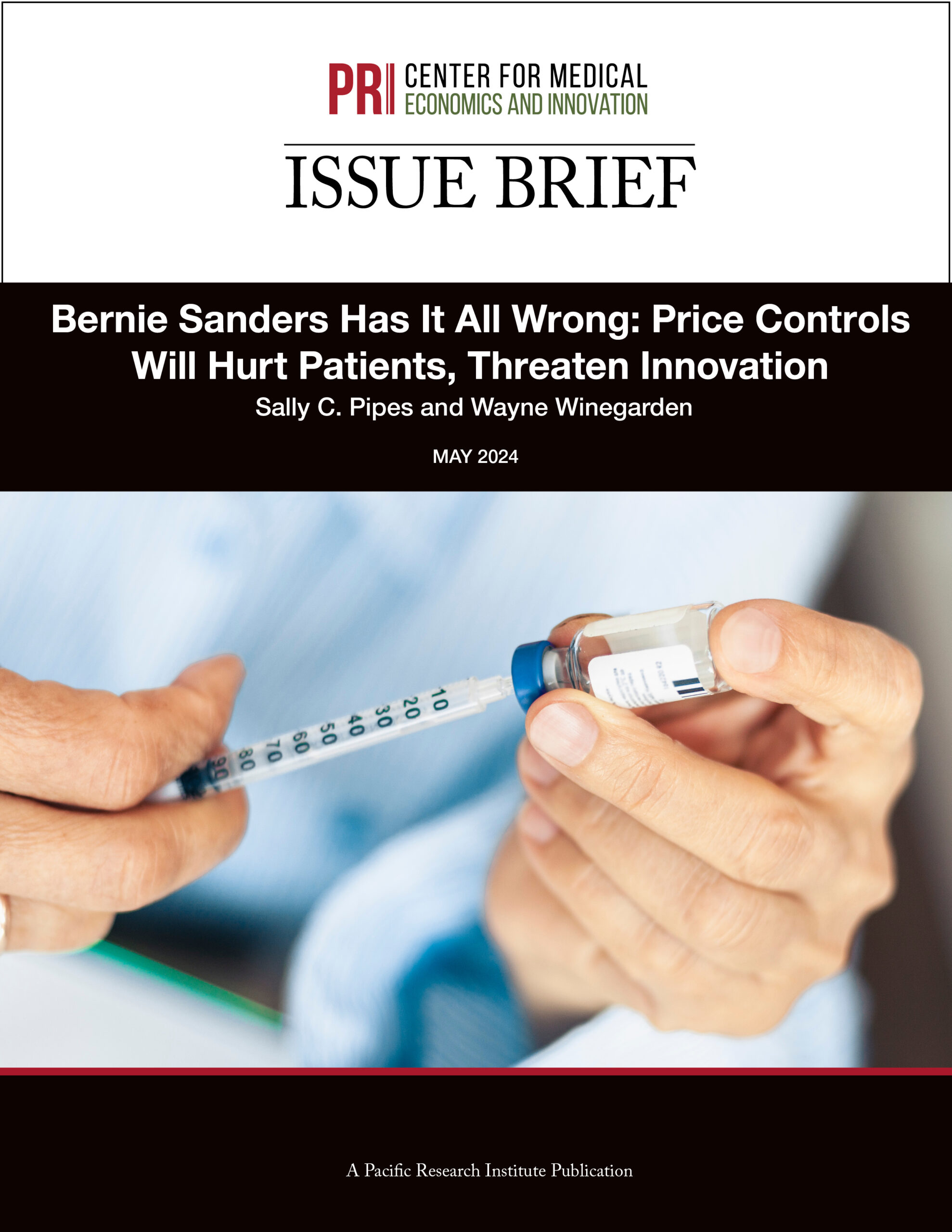SACRAMENTO – A new brief released today by the Center for Medical Economics and Innovation at the nonpartisan Pacific Research Institute analyzes a Journal of the American Medical Association (JAMA) study cited by Sen. Bernie Sanders (I-Vermont) to justify drug price controls, finding it was deeply flawed and would put patients at risk of losing access to cutting-edge medications if implemented.
“Sen. Sanders uses a flawed analysis to promote price controls on innovative drugs, which would jeopardize the health of those living with serious illnesses if implemented,” said Dr. Wayne Winegarden, director of PRI’s Center for Medical Economics and Innovation and the brief’s co-author.
To justify price controls, Sanders cites the JAMA study (“Estimated Sustainable Cost-Based Prices for Diabetes Medicines” by Barber, Gotham and Bygrave) claiming innovative diabetes medicines can be manufactured for $5 a month. Winegarden and Pipes identify numerous flaws that invalidate the study’s results and highlight how the Sanders agenda would put patient health at risk.
“Sen. Sanders, a long time supporter of Medicare for All, envisions himself a modern-day St. Michael slaying the dragon of high drug costs, but his agenda will deny innovative new treatments for patients hoping to access life-saving medicines,” said PRI President, CEO, and Thomas W. Smith Fellow in Health Care Policy Sally Pipes.
In one identified flaw, the JAMA authors do not adequately define excessive profits, despite it being their study’s central premise. Winegarden and Pipes argue the authors would consider recouping drug innovation costs in setting prices to be “excessive.”
- January 2024 figures show that pharmaceutical companies’ return on equity adjusted for R&D costs – a typical profitability measurement – was 12.4% while biotechnology companies had a -3.9% return. The market overall grew at 13.8%, showing industry profits were not excessive.
Patients pay higher out-of-pocket costs due to a broken system empowering pharmacy benefit managers (PBMs) to negotiate discounts that benefit PBMs at patients’ expense. List prices have increased to facilitate large discounts, while net prices incorporating discounts have fallen for 6 years according to Drug Channels. PBMs and insurers reap much of this gap between list and net prices as revenue. Patient costs, however, are rising as out-of-pocket costs are based on list prices.
Another flaw ignores the large research and development (R&D) and capital costs required to develop and manufacture drugs, which Winegarden and Pipes call “a grossly misleading estimate of the market prices for innovator medicines.”
- The industry invested $101 billion into R&D in 2022, compared to $36 billion spent by the government-funded National Institutes of Health.
- A Congressional Budget Office report detailing drug development costs – including R&D and research into failed drugs – ranged from less than $1 billion to more than $2 billion. Another study pegs the costs at $2.9 billion. Only 1 in 10 drugs will pass FDA review and trials to reach the market.

